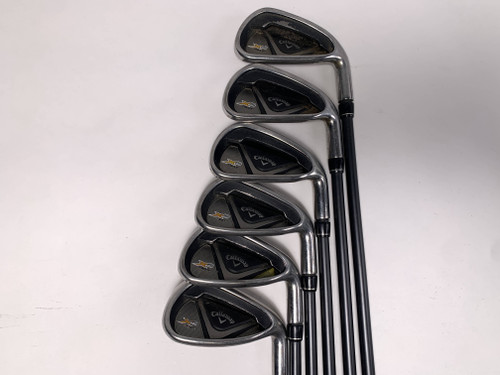Everything to know about shafts. Mostly driver shafts though.
Posted by Colin on Nov 14, 2023
The Golf Shaft Breakdown
When you ask someone what driver they use, nine out of ten times they say something like, "I'm playing the new Titleist TSr driver; it's sweet, I hit the ball a mile." It's not often that someone tells you, along with the head model, they are using a 70g, Fujikura, Ventus Blue, 6 Series, X-Flex, mid kick point Velocore shaft. Why don't people give these details? Probably because it seems a bit pretentious to provide all that information. There's no reason to go about being a dill weed, just because you use a shaft that's more expensive than your opponents entire iron set. Actually, that is why 100% of the time, a person with an AutoFlex shaft will always tell you they have an AutoFlex shaft. Hey Todd, why don't you just frig off with your Korea Hidden Technology... Sorry, Todd, you're not that bad; just please stop talking about your $800 pink shaft; nobody cares about that floppy moon pie.... Alright I lied again; AutoFlex shafts are pretty sweet, I'm just a poor. So aside from this totally made-up scenario and commentary on social pretense, let's learn about shafts.
There are seven main characteristics that you should be aware of: flex, kick point, weight, length, torque, tip size, and butt diameter.
Shaft Flex
The flex of the shaft is the most recognizable characteristic of the shaft. Flex generally goes from Ladies (L), to Senior (A), to Regular (R), to Stiff (S), to Extra Stiff (XS). (Project X shafts rates them numerically: 5.0 - Senior, 5.5 - Regular, 6.0 - Stiff, 6.5 - Extra Stiff, 7.0 - Tour Extra Stiff). Generally speaking the faster you swing your club, the stiffer shaft you will need.
Here it is by the numbers:
- <75 mph - Ladies or Senior Flex
- 75 to 95 mph - Regular Flex
- 95 to 110 mph - Stiff Flex
- >110 mph - Extra Stiff Flex
If you find that you are frequently hooking the ball or the ball is going way high, you might be swinging a shaft that has too much flex and maybe you should try using something stiffer. If you find yourself hitting slices and the ball flight is really low, you might be swinging a staff that is too stiff and maybe you should try using a more flexible shaft.
Shaft Kick Point
This is the area in the shaft where the bending feels like it's happening. For the sake of brevity shaft's can have a high, low, or mid kick point.
High-Kick Point means the shaft is stiffer near the tip section. These shafts will have a lower launch angle, reduced spin rate, and increased control. A shaft with a high kick point is better suited to golfers with a faster swing.
Mid-Kick Point shafts have a moderately stiff tip section. This is the most versatile of the kick points and suitable for all golfers. A mid kick shaft balances the accuracy of a high kick point shaft and the distance gained from a low kick point shaft.
Low-Kick Point shafts have a softer tip section. A shaft with a low kick point will lend itself to a higher launch angle, increased spin, and increased distance for golfers with a slower swing speed.
Shaft Weight
Driver shafts vary in weight typically between 45 to 70 grams, there are definitely special shafts that fall outside that range but 50g, 55g, 60g, and 65g are the most common. Ladies and senior flex shafts typically have a lighter weight while stiff and extra stiff generally have a heavier weight. With a lighter shaft you will be able to swing faster, with a heavier shaft you will be able to swing with more control. It also contributes to launch angles, a heavier shaft will produce a lower launch angle compared to a lighter shaft that will produce a higher launch angle. There aren't hard rules when it comes to picking the right shaft weight, really it comes down to what feels right to you. Go to the conclusion for recommendations or try using a couple different shaft weights and go with the one that feels the best when you're swinging.
Shaft Length
The length of a conforming club is capped by the USGA at 46 inches from the sole of the head to butt of the grip. That's because the longer the shaft is, the faster the club head speed becomes, and faster club head speeds means more distance, and the USGA doesn't like it when people hit bombs. Womp womp. In any case, the average driver shaft length on stock men's drivers is around 45.5 inches and women's drivers are around 44 inches. So you should probably stick with 45.5 inches right? Not necessarily. The longer the club becomes, the harder it is to control the face. The PGA tour average is 44.5 inches. If those guys a cutting off an extra inch to control head better maybe you should consider trying that as well.
Shaft Torque
Shaft torque measures the degree that a shaft resists twisting during a swing.
High Torque shafts twist more during a golf swing. Golfers may feel like they are more forgiving and helpful for people who have difficulty squaring the face at impact. They provide a softer feel and are beneficial to the golfers with slower swing speeds and less consistent ball strikers.
Low Torque shafts twist less during a golf swing. They are generally more stable for a golfer with a fast swing. They allow the golfer to maintain more control over the clubface and allow for more precise shot shaping. A low torque shaft is favored by the low handicapper who can predictably control the club face throughout the swing.
Shaft Tip Size
The research I saw does suggest that different tip sizes does change the performance characteristics slightly but really you should just get the size that fits into club head that your putting it on. If you really wanted to know though, a larger tip lends itself to a lower launch angle and reduced spin. The larger tip size also makes the club feel stiffer. A faster swing should go with a thicker tip. The converse for all of those points is true for a smaller tip size.
Shaft Butt Diameter
The butt diameter is measured across the end of the shaft where the grip would be when there isn't a grip on. Sizes can vary between .580" and .640", it's not commonly listed but you can find this information if you go to a manufacturer website and look for the specifications there. Generally a bigger butt makes the shaft play a bit stiffer. It also just might feel better in your hands. Get a butt that you can hold onto comfortably.
Conclusion
With all these different variables it might be tough to know what to go with, so here's a breakdown for a couple different golfers.
The Local Long Driver
This is the guy that cares more about distance than direction. You can see the veins bulging at their temples when they step up to the tee, and with an iron grip they violently yank their club on their backswing, then when the club has reached its apex you can hear a slight grunt as they propel the club down towards their prize. With a whoosh and a *clink* the ball is launched, it's majestic as it flies seemingly forever. Who cares that it's probably OB, it carried 290 and that's all that matters. Consider this shaft: Extra stiff shaft, high kick point, 90+ grams, 46 inches long, low torque, tip that fits, .630 butt diameter.
The Recent Lady Golfer
Golf is business to her, she's relatively new but since the day she started, she's been taking lessons. She doesn't have the muscle memory or mass from years of beating balls on the range but that doesn't deter her warrior spirit. She's good at two things: kicking butt and winning arguments, and she's all out of arguments. Consider this shaft: Ladies flex, low kick point, 50 grams, 44 inches long, high torque, tip that fits, .600 butt diameter.
The Tour Striker
He's not really on tour but he is very good. When you play with him it's almost frustrating how effortless he makes everything look. He's shaping every shot to his will and every ball from 100-yards and in, is just a chip and a putt. This guy is an assassin, he's intentional about everything, and even his worst misses make your good shots look bad. This write-up isn't really for him because he's at the range every other day trying and tweaking different things and he already knows what's good for him. This is just informational for the guy who wants to be like him. Consider this shaft: Stiff or extra stiff, high kick point, 65 grams, 45.5 inches, low torque, tip that fits, .605 butt diameter.
The Average Muni Walker
This is a guy that just like to go out and have fun, he drives the ball 240 and he's content as long as it ends up in the fairway. On most holes he's playing for bogey and he's come to terms with that. Any par is a celebration and a birdie is a raucous jubilee which is usually accompanied with fireball on the subsequent hole. He cares about golf, it has a precious home in his heart. He would like to be better but he doesn't have the time to be at the course every day, so he looks for advantages where he can get them, and that's why he's reading this. Consider this shaft: Regular flex, mid kick point, 60 grams, 45 inches long, high torque, tip that fits, .605 butt diameter.






